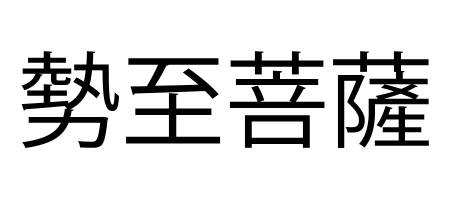A Fountain Pen Depicting Seishi Bosatsu In Chôshitsu Style c. 1930
by Jim Mamoulides, December 29, 2023
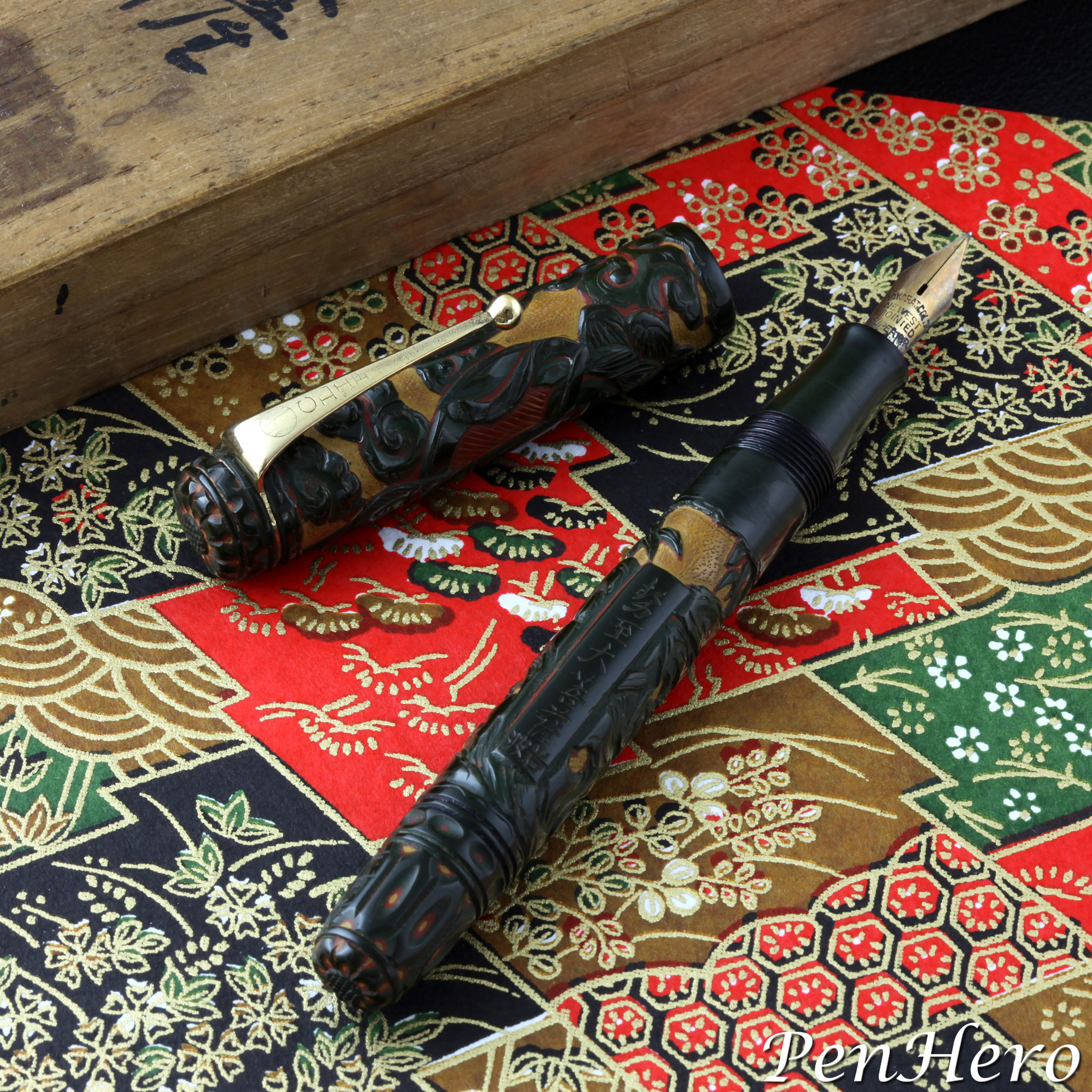 Fountain pen depicting Seishi Bosatsu in Chôshitsu style c. 1930
Fountain pen depicting Seishi Bosatsu in Chôshitsu style c. 1930
A Gift for the Year of the Horse
This is a Japanese ink shut off eyedropper filling fountain pen by an unknown pen maker from c. 1930 carved using the Chôshitsu technique. The inscription panel on the barrel reads Seishi Bosatsu, one of the two primary attendants to Amida Buddha. Seishi Bosatsu is the protector deity and provider of strength and wisdom for those who were born in 1930, the Year of the Horse. This symbolism, along with the Chôshitsu artwork dates the pen to or near 1930.
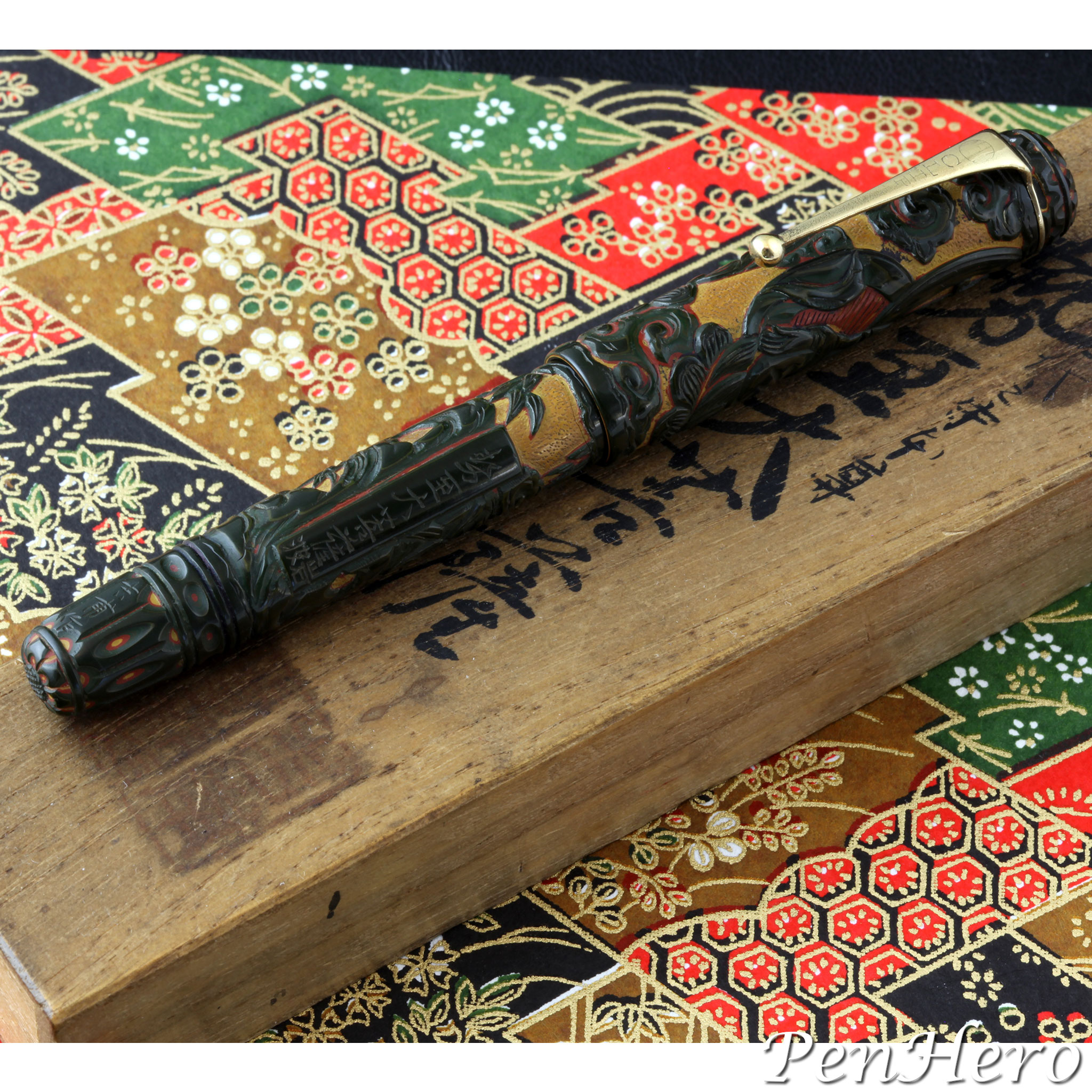 Fountain pen depicting Seishi Bosatsu in Chôshitsu style c. 1930
Fountain pen depicting Seishi Bosatsu in Chôshitsu style c. 1930
The inscription panel has two smaller characters on the bottom that may be the town where a temple dedicated to this bodhisattva, a person who is on the path to enlightenment, is located. There are numerous such temples in Japan. The original Paulownia wood box is decorated with calligraphy that reads Seishi Bosatsu and includes the artist’s seal. Paulownia wood, native to east Asia and China, is light and strong and was and is used by several Japanese pen makers for their pen boxes. Inside the cover of the box is name of the artist and the mark for "made by." There is also a small label that mentions "Year of The Horse."
A highly detailed pen by an unknown artist and pen maker
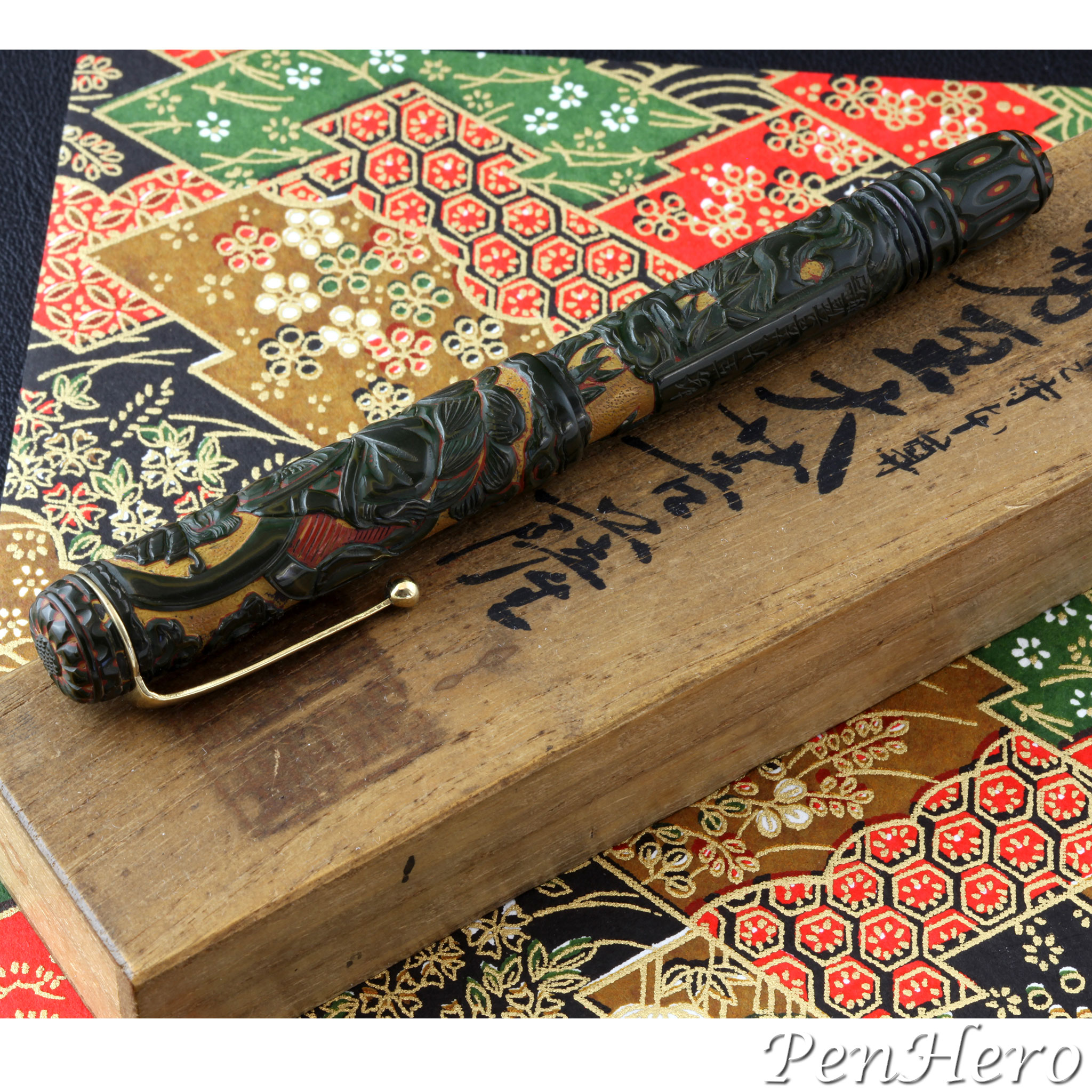 Fountain pen depicting Seishi Bosatsu in Chôshitsu style c. 1930
Fountain pen depicting Seishi Bosatsu in Chôshitsu style c. 1930
The five inch long capped pen is cylindrical in shape and the base was probably crafted from hard rubber and then coated with many layers of urushi providing a very thick carving base. The rolled gold clip is stamped CLIP and has an unknown marking at the top. The 14 karat gold number 4 nib is stamped 14 KARAT GOLD over NEWEST over POINTED over SUPERIOR. The nib, feed, and clip were likely purchased from a pen parts supplier by the unknown pen maker, a common practice of small pen shops, who may have been located in Osaka or Tokyo.
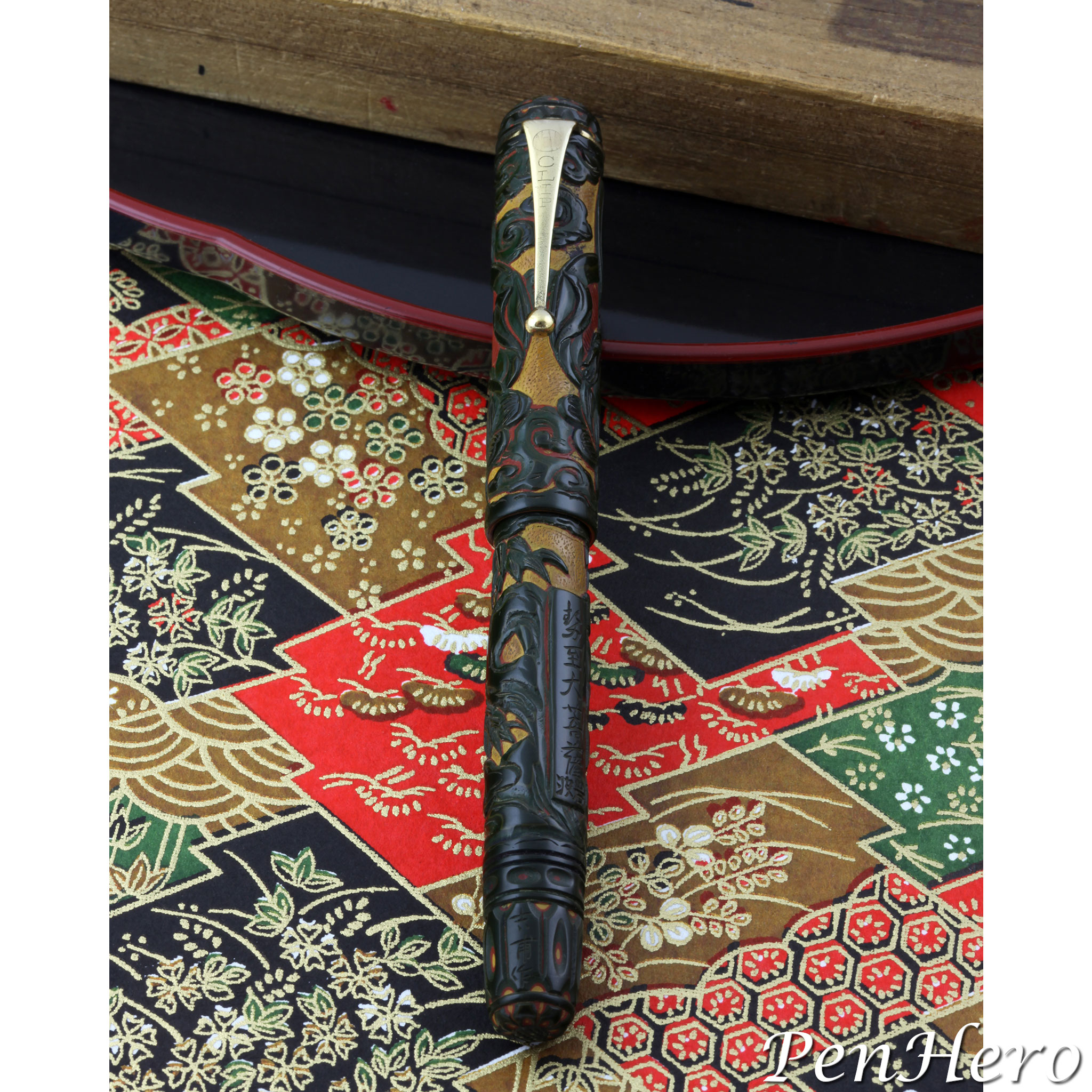 Fountain pen depicting Seishi Bosatsu in Chôshitsu style c. 1930
Fountain pen depicting Seishi Bosatsu in Chôshitsu style c. 1930
Safety shut-off, or ink-stop, eyedropper pens have a knob at the end of the barrel with a long rod attached that extends up to the base of the feed in the nib section. These pens fill by unscrewing and removing the nib section and dripping ink into the barrel using a long eyedropper. When the knob is screwed flush with the end of the barrel, the tip of the rod cuts off ink flow to the feed, making it an ink shut off valve. The knob must be unscrewed slightly to allow ink to flow to the nib so the user can write.
Chôshitsu
Chôshitsu artwork is a technique in which many layers of urushi lacquer are layered onto the base pen, sometimes in several colors, and then carved to achieve the desired relief design. The pen has a very heavy coating of urushi in at least three colors, dark brown, red and tan, and the dark brown layers have several shades. The very thick urushi layers allow for the deep cuts needed for the high relief carved artwork and expose the colors of each layer. According to Martin Pauli, Chôshitsu "sometimes requires several dozen up to more than a hundred layers of lacquer, sometimes requiring years to create. Occasionally the term is used to refer any form of carved lacquer. Chôuhitsu is divided by color into tsuishû = red carved lacquer, tsuikoku = black carved lacquer, tsuiô 堆黄 yellow carved lacquer." Kamakurabori is a technique where wood is carved and then lacquered to give the look of Chôshitsu.
The back of the cap has the image of Seishi Bosatsu, or Mahāsthāmaprāpta, in what appears to be a seated position in long flowing robes with one arm raised. He has a solemn, calm face with closed eyes, flowing chin length hair and a hat. At his feet are large shells or rocks and the back of the cap has flowing patterns under the clip. The barrel has wild bamboo stalks and a large vertical inscription panel with Seishi Bosatsu above name of the temple's town. The ornately carved shut off end cap also has an inscription, probably the artist’s name.
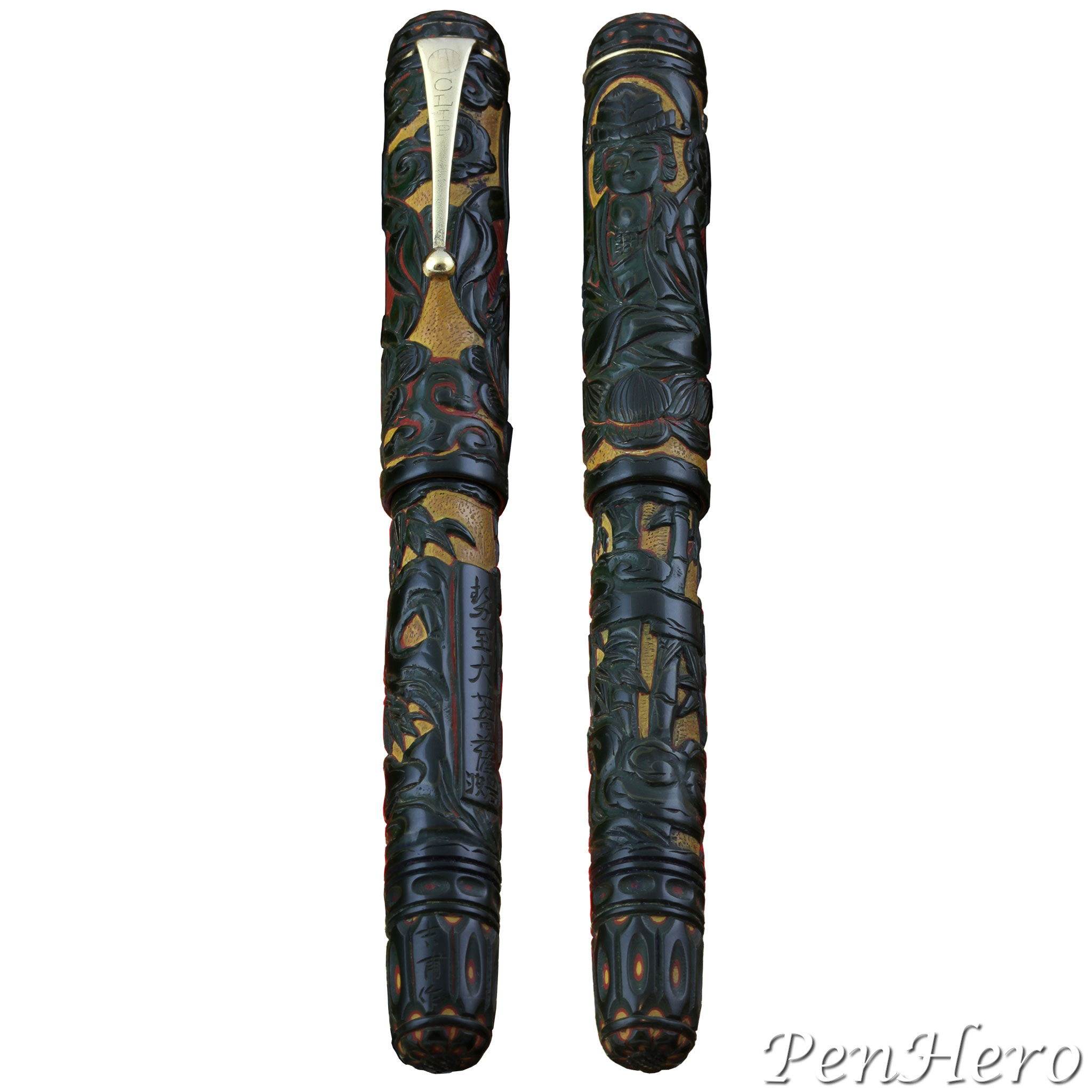 Fountain pen depicting Seishi Bosatsu in Chôshitsu style c. 1930
Fountain pen depicting Seishi Bosatsu in Chôshitsu style c. 1930
Seishi Bosatsu
Seishi Bosatsu, or Mahāsthāmaprāpta, was one of the two primary attendants to Amida Buddha. He is known as the protector deity and provider of strength and wisdom for those who were born in 1930, the Year of the Horse.
Often represented as a trio in sculpture and artworks with Buddha and Kannon, Seishi Bosatsu stands to the right of Buddha where Kannon stands to his left. Bosatsu is the Japanese transliteration of the Sanskrit word Bodhisattva, which means destined to or seeks enlightenment.
Collectibility
Japanese pens adorned with chôshitsu artwork are highly valued and sought after. The range of decorations include complete scenes, people, animals, as well as abstract works. Because each is handmade at each step, including layering the urushi on the cap and barrel, carving the artwork, and final finishing and assembly, each is a unique art piece, even if multiples of the same design were made. This pen is a particularly nice example as the artwork is very high relief, depicts a specific person, Seishi Bosatsu, for a specific purpose, 1930, the Year of the Horse, and is beautifully executed. It would hold a prime place in a Japanese pen collection.
Acknowledgement
Thanks to Martin Pauli for clarifying the difference between Chôshitsu and Kamakurabori artwork techniques.
References
Attendant Bodhisattva Seishi, The Metropolitan Museum of Art
Bodhisattva Seishi, The Metropolitan Museum of Art
Chôshitsu, Bori, Guri, Tixi, Tsuishû, Tsuikoku, Kamakurabori, by Martin Pauli, The Fountain Pen Network
Fountain Pens of Japan by Andreas Lambrou and Masamichi Sunami, 2012 Andreas Lambrou Publishers Ltd. Epping, Essex, UK, pages 290-315
Seishi Bosatsu, Seishi Bodhisattva, Daiseishi, Mark Schumacher, Copyright 1995 - 2014, Japanese Buddhist Statuary
Standing Seishi Bosatsu (Mahāsthāmaprāpta), Nara National Museum
Interact
Comments on this article may be sent to the author, Jim Mamoulides


